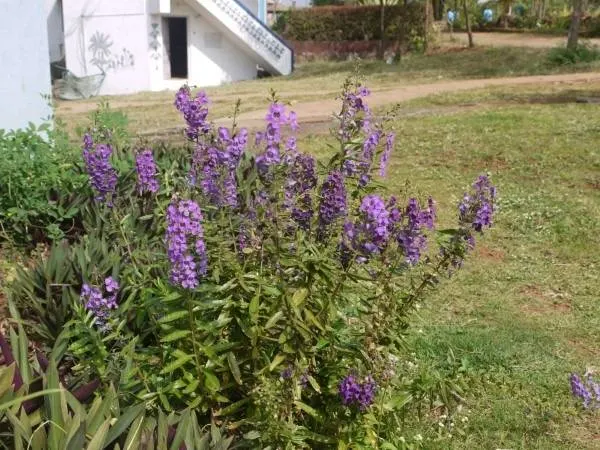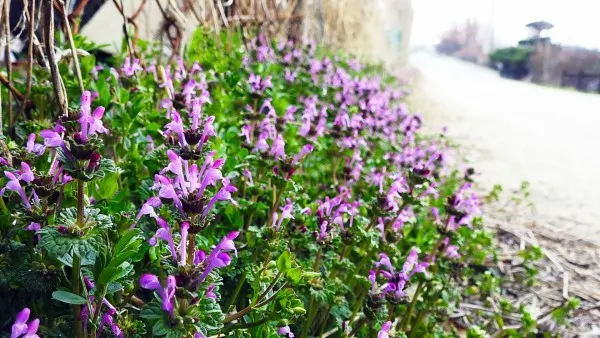Angelonia Angustifoliais also commonly referred to as Angelonia or summer snapdragon due to its close resemblance with those flowers. Angelonia is a perennial plant native from Mexico to Argentina and Northeastern Brazil.
Angelonia is widely cultivated for its beautiful and vibrant flowers that resemble a lot with snapdragon or dog flowers. Like any other perennial, you should know how to trim Angelonia to maintain it healthy.
Angelonia has become a hit since it was introduced as an ornamental plant worldwide. Angelonia comes in various strikingly gorgeous colors like red, blue, purple, pink, white, and even more astonishing color combinations.
It makes Angelonia a perfect plant to adorn your lush garden and add a spectrum of colors to it. Their flowers bloom for quite a long period during the summer season, about 6 to 8 weeks.
Angelonia plants are evergreen perennials that stay lush green all year around. They are low maintenance and easy to care for. If you are looking for instructions to guide you on how to trim Angelonia, then keep reading this article.

When Should You Trim Angelonia?
As you know, the Angelonia blooms during the summer months. So, the best time to trim and prune your Angelonia is right before the blooming season starts. Trim your Angelonia during the early spring season.
As the plant growth increases after the cold winter months, the best time is to prune them during spring. It will provide ample time for your plant to recover and rejuvenate.
Avoid trimming during mid-summer or late summer, as this is the time when the flowers will start to bloom. Trimming your Angelonia will help it grow thicker and bushier for the following season.
During the winter months, the growth of the plants gets stunted, and the stems get thinner and start shedding leaves. It is probably not a good time to trim Angelonia either.
You can trim any damaged or sticking-out branches during any season. But to trim and prune the Angelonia plants, you should wait till the start of the spring season, preferably the month of March.
How to Trim Angelonia
To learn how to trim Angelonia, follow our simple tips to get the most efficient results.
Items You Will Need
- Gardening Shears or scissors
- Hedge trimmer
- Rubbing alcohol or any household cleaning agent
- Water
Step 1: Sterilize Your Tools
Before you begin trimming, start by sterilizing the tools. This step is important to avoid spreading any disease or bacterial infection from one plant to another. When the plant is cut during trimming, it is vulnerable and exposed to various hazards like contracting a virus or disease.
Cleaning ensures that you get rid of any bacteria or virus present on your tools so when you trim your plant, it remains safe.
Step 2: Trimming the Stray Aways and Wilting Parts
The next step is to groom and manage the plant to make it easier to trim in an even manner. Take a pair of sharp gardening shears or scissors and start by cutting any damaged or diseased branches, stems, or leaves.
Once all the damaged and diseased parts are removed, clean your tools again. Cut the stems and branches which are particularly sticking out or crossing over. Get rid of all the stray or twisted stems to even out the plant.
Step 3: Trim the Plant
Now that you have gotten rid of all the wilting, dying, or diseased parts, it is time to start trimming. For this purpose, you can either use hedge trimmers for an easier job, but sharp shears will also work perfectly fine.
Start by cutting each stem individually instead of cutting them altogether. Cut one-third of the plant’s height. Cutting the stems individually rather than collectively ensures that each stem has a node from where the new growth will sprout. Cutting them together may result in haphazard trimming, and stems might not be able to regrow properly.
Step 4: Water the Plant
Once you are done with all the trimming and pruning, give the plant enough water to recover from the shock of cutting. Make sure that you provide the right conditions and water regularly. Take extra care for a couple of weeks after trimming, and then keep taking care of your lovely plant as you normally would.
Step 5: You Are All Done!
With these super easy instructions, now you have learned how to trim Angelonia. Now take care of your plant and sit back and enjoy the season of gorgeous Angelonia blooms!

Essential Care Points to Remember About Angelonia
1. Growth Rate and Size
The Angelonia plant can grow as tall as 18-inches, and its growth rate depends on the season. The growth rate is exceptionally higher during summer and spring than in winters.
2. Fragrance and Blossoms
The foliage of the Angelonia plant often gives off a mild fragrance of apples. The flowers grow on the tips of the Angelonia’s stems, and their color ranges from red, purple, pink, blue, white, and a combination of many other hues, even with stripes.
Angelonia’s flowers usually do not give off any strong fragrance. Their flowers do not require any deadheading either.
3. Temperature and Light Preferences
Angelonia prefers a high temperate environment with high humidity. They need at least six hours of sun a day to get their required share of energy to bloom constantly. Angelonia thrives best in an area with very high humidity and bright direct sunlight.
The hot climate and high humidity are the holy grail for Angelonia. That is why they grow best in southern areas and the southwest.
4. Watering and Fertilizers
This plant is quite sturdy and is used to grow in hot climates; therefore, it does not require too much water and can survive droughts. Water your plant not too often and let the soil dry out between watering.
If the soil has good drainage, you can moisten it more often. Angelonia does not require too many fertilizers. You can use a light fertilizer once every other month. Overdoing the fertilizers will lead to a plant with voluminous foliage and fewer flowers.
5. pH and soil
Angelonia prefers well-drainage soil. Using the soil with higher organic matter reduces the need for fertilizers and watering. The optimal pH level preferred by Angelonia is slightly acidic between 5.5 and 6.2.
6. Grooming
Angelonia is a fairly low-maintenance plant and does not require too much care. If the plant starts to sprawl excessively during the summer season, you can trim it half its height so it can regrow and bloom again.
Conclusion
With lovely flowers of various colors that bloom for most of the summer, Angelonia is a perfect perennial to embellish your garden. Being low maintenance and easygoing is a cherry on top. It is important to trim perennial plants like Angelonia to maintain and control them.
Trimming also results in healthier and thicker bushes that yield more flowers. We have enlisted the step-by-step instructions on how to trim Angelonia and additional care tips to achieve effective results.
Now you can take care of your plant like a pro and manage its growth just as well. We would love to hear your feedback!
